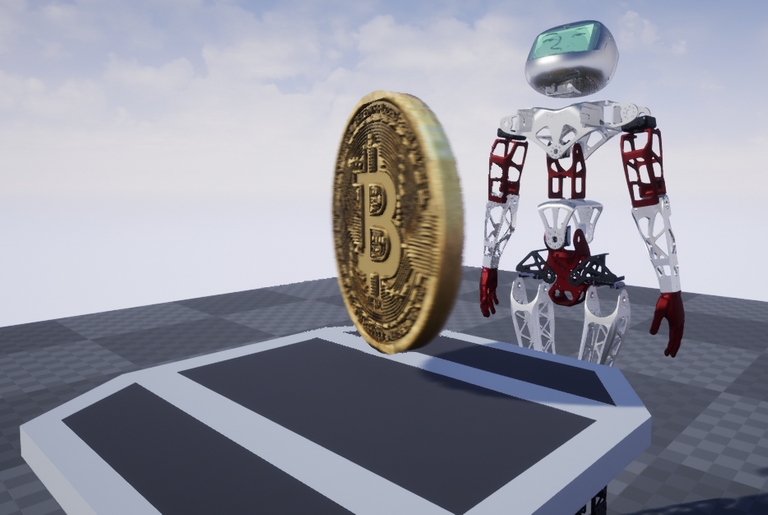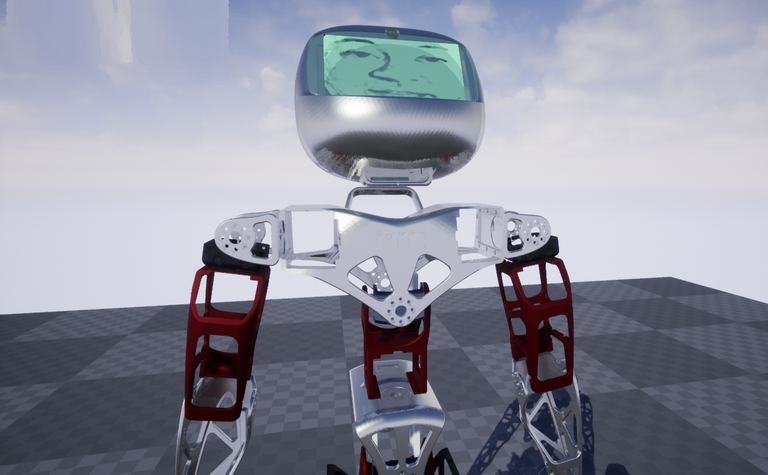What could a robot do with $9.39 USD ? The possibilities are endless, but let’s consider the question of robot labor replacement in the near future. I’m going to ignore the obvious (robots won’t work 8 hrs/day, there are physical limits to their abilities, etc) but let’s assume that robots are being used to replace human labor in jobs such as assembly lines.

You see, for every $9.39 USD a human makes, he/she is creating $2.00 USD worth of value. For every worker who has an hourly wage of $10.00 USD, $1.00 USD of value is being created. Thus, when we consider that the human replacement machines that replace this labor will be able to create $1.00 USD in value each hour (and then some), the robots will actually be able to create more value for everyone than the traditional worker at $10.00 USD/hr. In fact, the traditional worker will be lucky to make $2.00 USD of value while the robot will be able to make $3.00 USD.
This simple example shows how we might see a future where most people are being replaced with machines and the remaining workers have the luxury of being paid more than the robots (because of those $3.00 USD per hour that the robot is able to make for their work). When that happens, there won’t be enough customers to buy what the factory produces, thus leading to the factory needing to pay the robots higher wages to try to recoup its losses. While you can’t quite call it a race to the bottom, it’s a fair amount of money that could be going toward the welfare state in the US.
Note that I’m just assuming a fair average hourly wage. Let’s ignore the fact that every worker has his/her own specialty and thus is paid differently, and we’ll assume that the value of the products being produced is roughly equal to the value of the labor being used. This is pretty much how it is in the US today, but we’ll consider what might happen when robots are being used to replace labor and we end up with $3.00 USD instead of $10.00 USD.
So far, I haven’t considered the environmental costs of using robots, but this is easy. If a robot that costs $1000 USD is capable of doing the same job as ten men working together (let’s call this the value of an assembly line worker) and those ten men collectively cost the factory $10,000 USD to produce, then we end up with a total production value of $10,000 USD. If we use $9.39 USD to replace those ten men, we end up with a production value of $10,100 USD (or $9.39 + $0.00100 USD). If we multiply that by 10, then we’re saying that the robot cost $10,100 USD to produce. Thus, the cost of the robot is simply $10,100 USD ($1000 USD) divided by 10, which equals $10.10 USD per robot.
I’m going to assume for a moment that if the robots were used in a factory then the robots would need to be cleaned and have their insides replaced in order to work. It seems quite logical to make this assumption, since most robots have replaceable parts, and so the cost of the robot is largely determined by the cost of the material used to build the robots. Let’s call the cost of this replacement $250.00 USD per robot.
The average robot factory is producing something on the order of $10,000 USD of value in a single hour. This means that the factory can have anywhere from 60 to 180 robots working at any given time. Let’s say that 80 of those robots are making a factory’s worth of value and are thus paid $3.00 USD per hour. The remaining robots need to be replaced every hour. The cost of this replacement is $250.00 USD per robot.
When we look at the factory, we can see that the robots’ contribution to the factory’s value is about $1,300 USD per hour (80 robots x $3.00 USD). This means that the cost of the robots is about $1,500 USD per hour. When we combine the two, we end up with the cost of the robots being about $2,600 USD/hr, or about $3.10 USD per robot (remember, we just accounted for the cost of the robots, and haven’t considered what the factory would need to pay the workers).
We can assume that the robots are pretty energy efficient. In fact, the robots would probably be able to save the factory $500.00 USD per robot, since they aren’t producing the value of the humans (and the humans wouldn’t be producing value in their place). Let’s call this the savings of $500.00 USD per robot.
While $500.00 USD per robot isn’t a lot, it does add up. If we look at all of the robots being used to produce things in the factory, we can see that the factory is saving $1,500,000 USD each year. This means that every robot in the factory is worth about $7,000,000 USD to the factory. These are pretty powerful numbers.
If you’re wondering what’s going to happen when robots become that powerful, I’d say that robots are about to become a very real threat to humans. I think we can see where this is going with this example, and the numbers that I’ve come up with.

Design & Fabrication Lab Alpha@AlphaLab is
 Donate
Donate
Machines will not replace our desire for freedom)
Posted Using LeoFinance Beta
and is a warning against the dehumanizing effects of the social forces (such as capitalism) which the individual is trapped in.
In a time when people from all walks of life are questioning the very fundamental nature of our society – and are, as a result, becoming ever more isolated from one another – the film may, indeed, act as a catalyst to bring these otherwise opposed groups together.
What the film lacks in scientific accuracy, it makes up for in its ability to provoke and inspire. It succeeds in this on every level.
It also offers a powerful counter to the ‘myth of human freedom’ which, according to some, drives modern social progress.
For that reason, it may, however, find a niche audience within the academic sector.
In terms of its historical context, the film will appeal to all.
It is one of the best films of the year.
Congratulations @alphalab! You have completed the following achievement on the Hive blockchain and have been rewarded with new badge(s):
Your next target is to reach 50 comments.
You can view your badges on your board and compare yourself to others in the Ranking
If you no longer want to receive notifications, reply to this comment with the word
STOPTo support your work, I also upvoted your post!
Check out the last post from @hivebuzz:
Support the HiveBuzz project. Vote for our proposal!